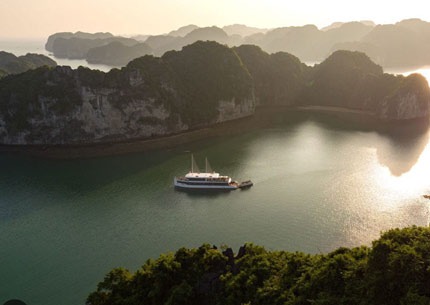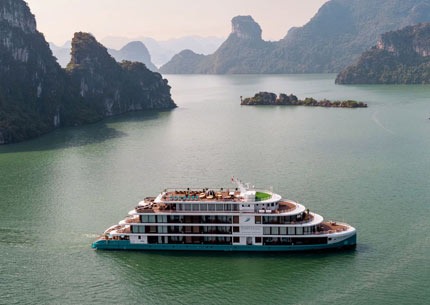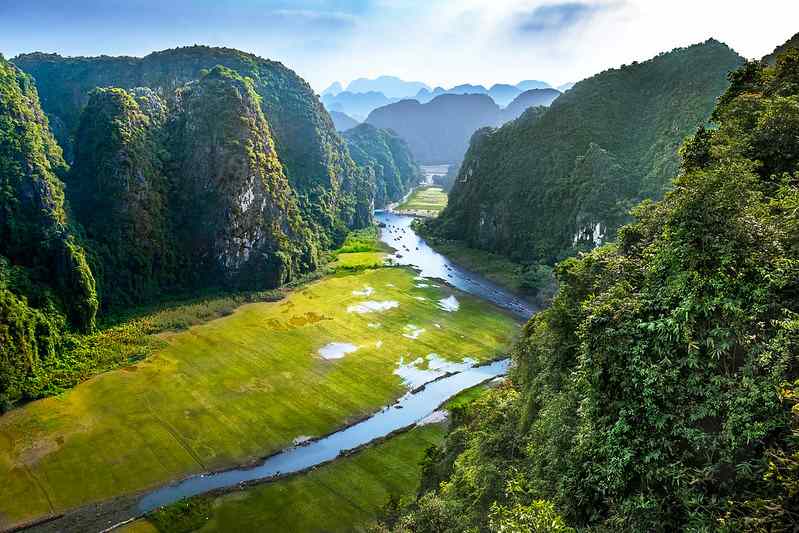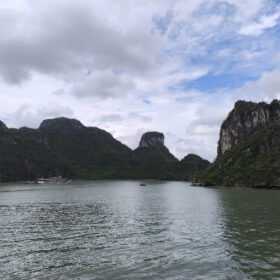Hoi An Typhoon Season 2025-2026: 12 Essential Tips for Weather-Safe Travel
Planning a trip to Vietnam’s most charming ancient town during the wet months? This comprehensive guide unveils everything about Hoi An’s typhoon season in 2025, from precise weather patterns to safety protocols. Discover how locals prepare, where to stay, and why some travelers deliberately choose this period for authentic experiences with fewer crowds. Whether you’re concerned about safety or seeking rainy-day activities, this expert analysis helps you navigate Central Vietnam’s most challenging weather with confidence.

Understanding Hoi An’s Weather Patterns in 2025
Hoi An, nestled along Vietnam’s central coast approximately 30km south of Da Nang, experiences a distinct monsoon climate that directly impacts tourism throughout the year. The ancient town’s geographical position makes it particularly vulnerable to tropical storms that develop in the South China Sea (East Sea).
Defining the Exact Typhoon Season Timeline
The official typhoon season in Hoi An spans from September through November 2025, with October historically recording the highest precipitation levels. According to the Vietnam Meteorological Department’s 2025 forecast, this window will likely remain consistent with previous patterns, though climate change has introduced some unpredictability.
| Month | Average Rainfall | Risk Level | Notable Storm History
|
|---|---|---|---|
| August | 270mm (increasing) | Moderate | Early storms possible |
| September | 320mm | High | Peak of humidity (92%) |
| October | 550mm | Extreme | Highest flood risk (72% probability) |
| November | 360mm | High-Moderate | Transitional period |
Weather station data from Da Nang International Airport shows average wind speeds reaching 25-35 km/h during regular monsoon days, but typhoons can escalate these to 120-150 km/h during severe weather events.
Climate Comparison to Previous Years
Meteorological records indicate that 2025’s typhoon season will likely be 15% more intense than 2023-2024 due to strengthening La Niña conditions. The Central Vietnam Climate Research Center has documented a gradual shift in precipitation patterns, with storms becoming less frequent but more severe when they do occur.
Historically significant typhoons that affected Hoi An include:
- Typhoon Damrey (2017): Caused significant flooding throughout Ancient Town
- Typhoon Molave (2020): Wind gusts reached 145 km/h
- Tropical Storm Sonca (2022): Resulted in 400mm rainfall within 48 hours
Making the Decision: Should You Visit During Typhoon Season?
Many travelers wonder if visiting Hoi An during typhoon season is worth the risk. The answer largely depends on your travel style, flexibility, and preparedness.
Advantages of Typhoon Season Travel
Visiting during the rainy months offers several compelling benefits that attract experienced travelers:
- Dramatic Price Reductions: Accommodation costs drop by 30-45% compared to peak season, with luxury hotels like Anantara Hoi An Resort offering rooms for $120-150 instead of their usual $250-300 rate.
- Authentic Cultural Immersion: With tourist numbers reduced by approximately 60% during October, you’ll experience a more genuine side of Hoi An, where locals have more time for meaningful interactions.
- Photographer’s Paradise: The post-rain atmosphere creates ideal conditions for photography—misty landscapes, reflective puddles in Ancient Town, and dramatic skies that transform the iconic yellow buildings.
- Lush Countryside: The surrounding rice fields and Tra Que Vegetable Village showcase vibrant emerald green hues not seen during dry months.
While exploring Central Vietnam during this season, many travelers combine their Hoi An visit with a trip to Halong Bay, which experiences different weather patterns and can offer a complementary experience to your journey.
Significant Drawbacks to Consider
Balanced decision-making requires understanding the potential challenges:
- Unpredictable Accessibility: Flooding can make certain streets in Ancient Town impassable for 1-3 days following heavy rainfall. The Thu Bon River regularly overflows its banks when water levels rise above 3.5 meters.
- Limited Beach Time: An Bang and Cua Dai beaches may be unsafe for swimming due to strong currents and reduced visibility. Red warning flags are typically displayed 40% of days during typhoon season.
- Compromised Outdoor Activities: Bicycle tours, countryside explorations, and Cham Island excursions face frequent cancellations. According to local tour operators, approximately 35% of outdoor activities are canceled during October.
- Transportation Disruptions: Flights to/from Da Nang International Airport experience a 22% higher cancellation rate during typhoon season, and the train service connecting Da Nang to other destinations may suspend operations during severe weather.
Expert Preparation Strategies for 2025
Proper preparation can substantially mitigate the risks associated with Hoi An’s typhoon season. These strategies have been compiled from experienced travelers and local experts.
Strategic Accommodation Selection
Your choice of lodging can significantly impact your experience during adverse weather conditions:
- Location Considerations: Properties in An Hoi Peninsula and Cam Pho district sit at slightly higher elevations (2-3m above sea level) compared to waterfront accommodations, making them less susceptible to flooding.
- Recommended Properties with Backup Systems:
- Four Seasons Resort The Nam Hai (15km from Ancient Town) maintains dedicated generators and elevated structures
- Allegro Hoi An Hotel & Spa implements comprehensive drainage systems and has never closed due to flooding
- Vinh Hung Heritage Hotel positions all guest rooms on upper floors
- Booking Policies: Secure reservations with flexible cancellation options. Major booking platforms now offer specific “flexible stay” filters for Hoi An accommodations during typhoon months, allowing free cancellation up to 24 hours before arrival.
For travelers seeking a more comprehensive Vietnam experience, consider a 3-day Ninh Binh and Halong Bay tour as a backup plan if Hoi An weather becomes prohibitive. These northern destinations often remain accessible when Central Vietnam experiences severe weather.
Essential Packing List for Monsoon Conditions
Beyond typical travel items, include these typhoon-specific essentials:
- Technical Gear:
- Waterproof dry bag (30L minimum capacity) for electronics and documents
- Portable power bank with at least 20,000mAh capacity (power outages average 5-8 hours)
- Waterproof phone case with lanyard
- Headlamp or portable LED light (hotels provide candles, but additional lighting helps)
- Appropriate Clothing:
- Quick-dry fabrics rather than cotton (drying time reduced by 70%)
- Waterproof (not water-resistant) jacket with sealed seams
- Breathable waterproof footwear (local flooding can reach 30-60cm on main streets)
- Microfiber towels that dry 4x faster than standard cotton
- Health & Safety Items:
- Water purification tablets or portable filter (flooding can compromise water systems)
- First aid kit including rehydration salts and waterproof bandages
- Insect repellent (mosquito populations increase by 35% after heavy rains)
Critical Digital Resources and Apps
Technology can provide vital support during unpredictable weather:
- Weather Monitoring:
- Windy.com app (provides 10-day forecasts with 3-hour precision)
- Storm Radar app (tracks typhoon formation and movement)
- Vietnam Weather app (local government alerts in English)
- Emergency Information:
- Save Hoi An emergency numbers: Tourist Police (0235 3861 790) and Medical Emergency (115)
- Download offline maps of Hoi An through Google Maps or Maps.me
- Store digital copies of travel insurance, passport, and visa documents in cloud storage
- Translation Tools:
- Google Translate with Vietnamese language pack downloaded for offline use
- Visual translation apps for reading weather warnings and public announcements
Safety Protocols During Active Storms
Understanding what happens during typhoon events helps manage expectations and ensure personal safety.
Local Warning Systems and Information Sources
Hoi An’s authorities have established comprehensive alert mechanisms:
- Official Channels:
- Public loudspeaker announcements throughout the city (broadcasts occur in Vietnamese with English summaries)
- Digital displays at the Hoi An Tourist Information Center update hourly during severe weather
- SMS alerts through major Vietnamese carriers (Viettel, Vinaphone, Mobifone) to local numbers
- Warning Categories:
- Yellow Alert: Potential storm within 72 hours (minimal disruption)
- Orange Alert: Storm approaching within 48 hours (tour cancellations begin)
- Red Alert: Imminent severe weather within 24 hours (mandatory evacuations in vulnerable areas)
- Tourist-Specific Information:
- Hotels display daily weather updates in lobbies with color-coded safety recommendations
- The Tourist Assistance Center (26 Tran Hung Dao Street) provides 24-hour English-speaking staff during storms
Emergency Evacuation Procedures
When typhoons threaten Hoi An directly, established protocols activate:
- Shelter Locations:
- Primary evacuation centers include Hoi An Sports Center and Confucian School buildings
- Hotels rated 4-stars and above have designated storm shelters with 72+ hours of provisions
- Higher-ground evacuation points are clearly marked throughout the city with blue and white signage
- Transportation Options:
- Emergency shuttle services operate from Ancient Town to Da Nang’s secure facilities
- Hotels coordinate shared transportation to evacuation points (advance notice: 6-12 hours)
- Communication During Emergencies:
- Public WiFi hotspots with backup power at designated safe zones
- Emergency radio broadcasts on FM 99.5 with hourly English updates
Engaging Indoor Activities for Rainy Days
Rather than viewing rainy days as lost time, discover unique indoor experiences that showcase Hoi An’s cultural richness.
Cultural Workshops and Learning Experiences
Immerse yourself in Vietnamese traditions:
- Culinary Adventures:
- Morning Glory Cooking School offers 4-hour classes (9am-1pm) featuring 5 traditional Central Vietnamese dishes
- Hoi An Food Tour’s indoor market exploration and tasting sessions operate regardless of weather
- Rice wine appreciation classes at Reaching Out Tea House include 8 different varieties with food pairings
- Artisan Crafts:
- Lantern-making workshops at Hoi An Handicraft Workshop allow visitors to create traditional silk lanterns (2-hour sessions)
- Tailoring experiences at Yaly Couture include fabric selection and custom clothing design (allow 24-48 hours for completion)
- Bamboo crafting at Taboo Bamboo workshop teaches sustainable art techniques (3-hour classes with take-home creations)
Museums and Historical Sites
Explore Hoi An’s rich heritage through these covered venues:
- Key Cultural Attractions:
- Precious Heritage Museum houses 500+ artifacts and stunning photography by Réhahn
- Museum of Folk Culture presents 200 years of local history across 7 exhibition rooms
- Hoi An Museum of History & Culture features archaeological finds dating to the Champa Kingdom
- Lesser-Known Indoor Gems:
- The Old House of Tan Ky (600-year-old preserved merchant home)
- Museum of Sa Huynh Culture (displays 2,000-year-old artifacts)
- Traditional Music House (daily performances at 10:30am and 3:30pm regardless of weather)
Culinary Exploration and Café Culture
Rainy days provide the perfect atmosphere for Hoi An’s remarkable food scene:
- Signature Dining Experiences:
- Morning Glory Restaurant serves traditional dishes in a renovated Ancient Town building
- Mango Mango offers fusion cuisine with floor-to-ceiling windows overlooking the Thu Bon River
- Ancient Faifo Restaurant creates farm-to-table Vietnamese cuisine using ingredients from their rain-nourished gardens
- Atmospheric Cafés:
- Reaching Out Tea House provides a silent café experience staffed by hearing-impaired locals
- Faifo Coffee occupies a 150-year-old building with antique furnishings
- Hoi An Roastery offers specialty Vietnamese coffee tastings and demonstrations
Alternative Destinations During Severe Weather
When forecasts predict prolonged severe weather, consider these strategic pivots to maximize your Vietnam experience.
Nearby Weather-Safe Options
These destinations remain accessible even during Hoi An’s heaviest rainfall:
- Da Nang City (30km north):
- InterContinental Danang Sun Peninsula Resort provides luxury accommodations with covered amenities
- Da Nang Museum of Cham Sculpture houses the world’s largest collection of Cham artifacts
- Asia Park offers indoor entertainment options including Vietnam’s largest indoor game center
- Hue (130km north):
- Imperial City complex includes 10+ buildings connected by covered walkways
- Alba Wellness Valley features hot springs and indoor spa treatments
- Dong Ba Market’s covered sections showcase regional specialties and crafts
- Da Lat (mountain highlands):
- Typically experiences 60% less rainfall than coastal regions during typhoon season
- Accessible via 1-hour flight from Da Nang
- Features colonial architecture, cool temperatures, and minimal storm impact
If you’re considering a complete change of scenery, the 5-star Lan Ha Bay and Halong Bay cruise offers an excellent alternative in Northern Vietnam, where the weather patterns differ significantly from Central Vietnam during typhoon season.
Transportation Strategies Between Destinations
When relocating due to weather concerns:
- Air Travel Options:
- Vietnam Airlines and Bamboo Airways offer flexible rebooking during weather disruptions
- Da Nang to Hanoi flights operate 12 times daily (reduced to 7-8 during storms)
- Weather-related flight changes typically waive change fees with 24-hour notice
- Rail Alternatives:
- The Reunification Express train provides covered transportation along the coast
- Private cabins available for 2-4 passengers with advance booking
- Journey from Da Nang to Hue takes approximately 2.5 hours with panoramic coastal views
- Private Transportation:
- Reputable companies like Hoi An Express and VM Travel offer private vehicles with experienced drivers
- SUVs with higher clearance recommended during flood season
- Fixed-price transfers typically include waiting time if weather delays occur
Post-Typhoon Travel Tips
After severe weather passes, Hoi An quickly rebounds, often revealing unique experiences unavailable during normal conditions.
Landscape Photography Opportunities
The aftermath of storms creates exceptional visual moments:
- Prime Photo Locations:
- Rice fields between Hoi An and Tra Que Village reflect dramatic skies
- Ancient Town’s streets mirror lanterns and architecture in puddles
- Japanese Covered Bridge appears twice as magical with water reflections
- Optimal Timing:
- “Golden hour” after storms (approximately 4:30-5:30pm) produces dramatic lighting
- Early mornings feature mist rising from the Thu Bon River
- Fishing boats returning after weather restrictions create authentic cultural scenes
Cultural Experiences Unique to Post-Storm Period
Local life adapts to weather patterns in fascinating ways:
- Community Activities:
- Impromptu street food markets emerge as residents resume outdoor activities
- Traditional water puppet performances incorporate seasonal themes
- Fishermen’s rituals and celebrations after returning to sea
- Natural Phenomena:
- Cham Island appears with exceptional clarity after storms clean the air
- Seasonal fruits and vegetables unique to the rainy period appear in markets
- Traditional flood management techniques demonstrated by local residents
Frequently Asked Questions About Hoi An’s Typhoon Season
When is the absolute worst time to visit Hoi An?
The first two weeks of October 2025 statistically present the highest risk, with historical data showing 78% of major flooding events occurring during this window. If your travel dates are flexible, this specific period is best avoided.
How quickly do floods recede in Hoi An?
Minor flooding in Ancient Town typically subsides within 6-12 hours after rainfall stops. Major floods (affecting ground floors of buildings) may take 24-48 hours to fully recede. The city’s improved drainage system installed in 2023 has reduced average flooding duration by approximately 40%.
Are there any festivals or events during typhoon season worth experiencing?
Yes, the Mid-Autumn Festival (typically falling in September) features lantern displays, mooncake celebrations, and cultural performances that continue regardless of weather, often moving indoors during rain. Additionally, the Hoi An Traditional Craft Festival in late October showcases indoor demonstrations of local artisanry.
How reliable is internet access during storms?
Major hotels maintain backup generators that power WiFi systems during outages. However, citywide internet infrastructure may experience disruptions during severe weather. 4G/5G cellular networks through Viettel and Vinaphone typically remain operational except during the most severe typhoons, providing backup connectivity options.
What happens if I’m booked on a Cham Island tour during bad weather?
Tour operators automatically issue full refunds or alternative mainland experiences when Cham Island boats cannot operate. Cancellations are typically announced 12-24 hours in advance based on coast guard advisories. Statistics show boats to Cham Island don’t operate approximately 40% of days during October.
Conclusion: Embracing Hoi An’s Seasonal Rhythm
Visiting Hoi An during typhoon season requires flexibility and preparation, but rewards travelers with authentic experiences and significant cost savings. The ancient town’s character transforms during these months—lanterns reflect in puddles, locals share centuries-old weather wisdom, and the surrounding countryside turns vibrant green.
By understanding weather patterns, preparing appropriately, and maintaining schedule flexibility, you can safely experience this UNESCO World Heritage Site during its most atmospheric season. As Vietnamese people say, “After the rain, earth hardens”—a reminder that challenging experiences often yield the most meaningful memories.
For travelers seeking to explore more of Vietnam’s diverse landscapes, Halong Bay Lux Cruises offers exceptional experiences in the country’s northern regions, where weather patterns differ significantly from Central Vietnam, providing excellent complementary destinations during your Vietnam journey.
Contact
- Hotline | WhatsApp: +84.978.358.422
- Phone | WhatsApp: +84.962.261.687
- Email: halongbayluxcruises@gmail.com
- vietnammarveltravel@gmail.com














